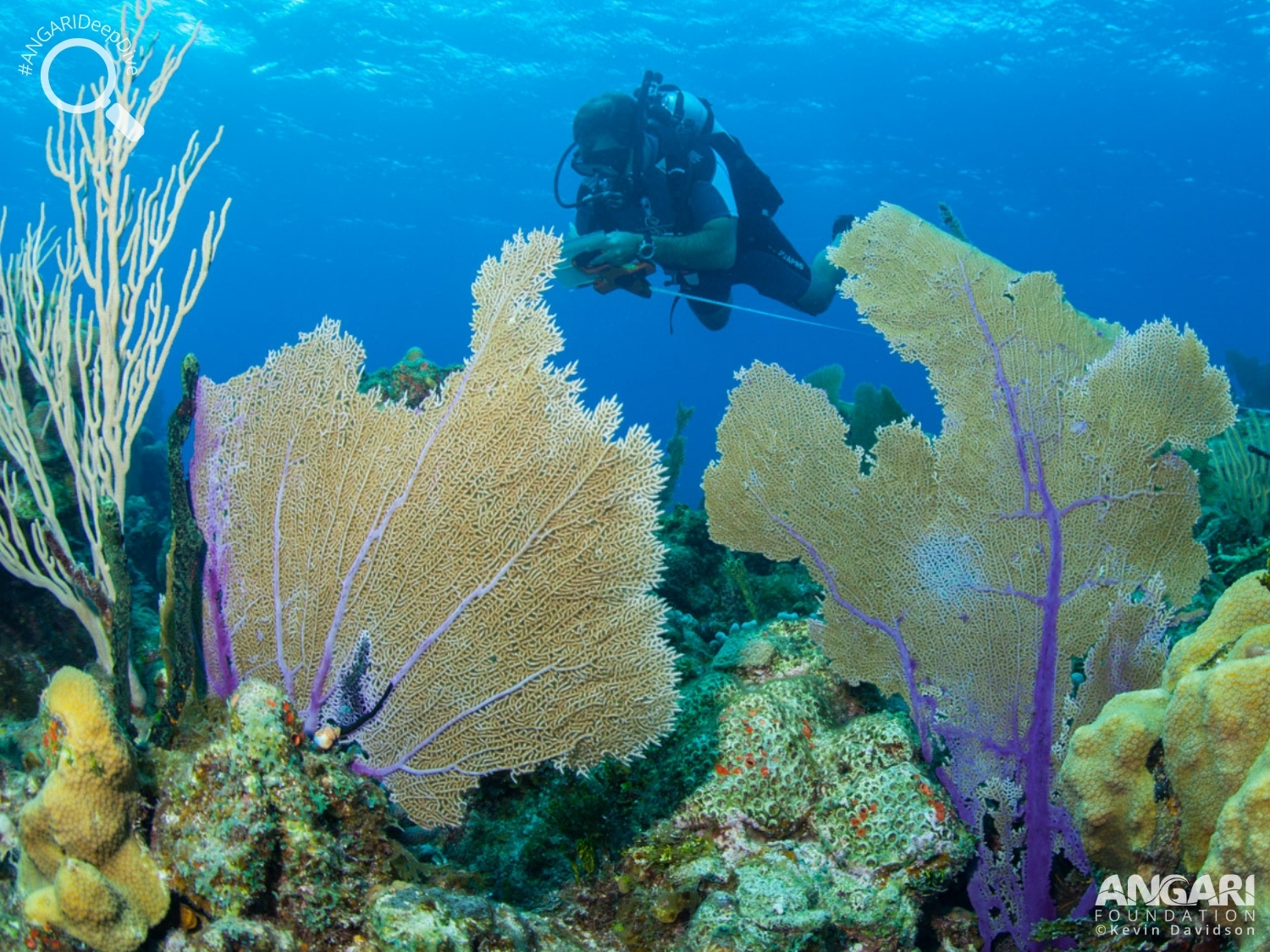Gray angelfish are found on coral reefs in the western Atlantic Ocean and can be identified by their shiny gray body with yellow pectoral fins.

Regal Sea Goddess Nudibranch (Felimare picta)
The regal sea goddess nudibranch (Felimare picta) is a species of nudibranch that is commonly seen on coral reefs and rocky sea floors in the Gulf of Mexico and Atlantic Ocean. This soft-bodied marine gastropod is normally found at depths between 0 and 180 feet and can be identified by the extremely colorful patterns across its body.
Keep reading to learn about this intriguing little species of nudibranch.
#1: How large is the regal sea goddess nudibranch?
When you go out looking for nudibranchs you will need to keep your eyes peeled as they are generally quite small in comparison to their surroundings. Still, the regal sea goddess nudibranch is a larger species of nudibranch and can grow up to 5.1 inches long.
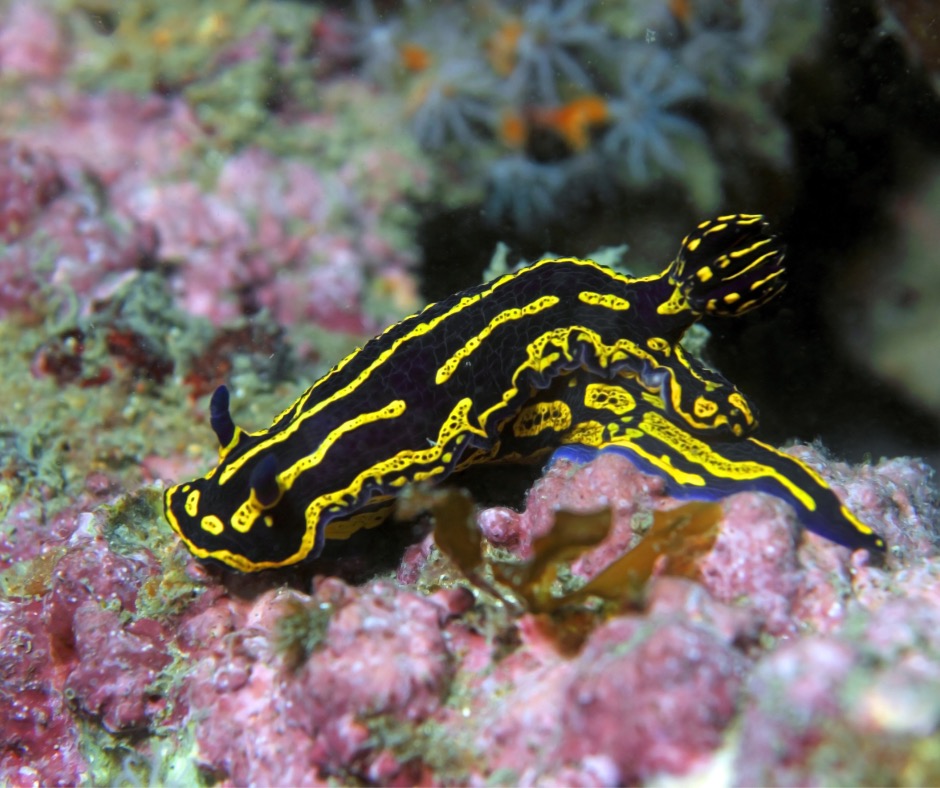
#2: Look for the unique pattern and coloration of the regal sea goddess nudibranch.
The regal sea goddess is easily identifiable by its coloration. They have a dark blue, almost black base color with vibrant yellow markings. How beautiful!
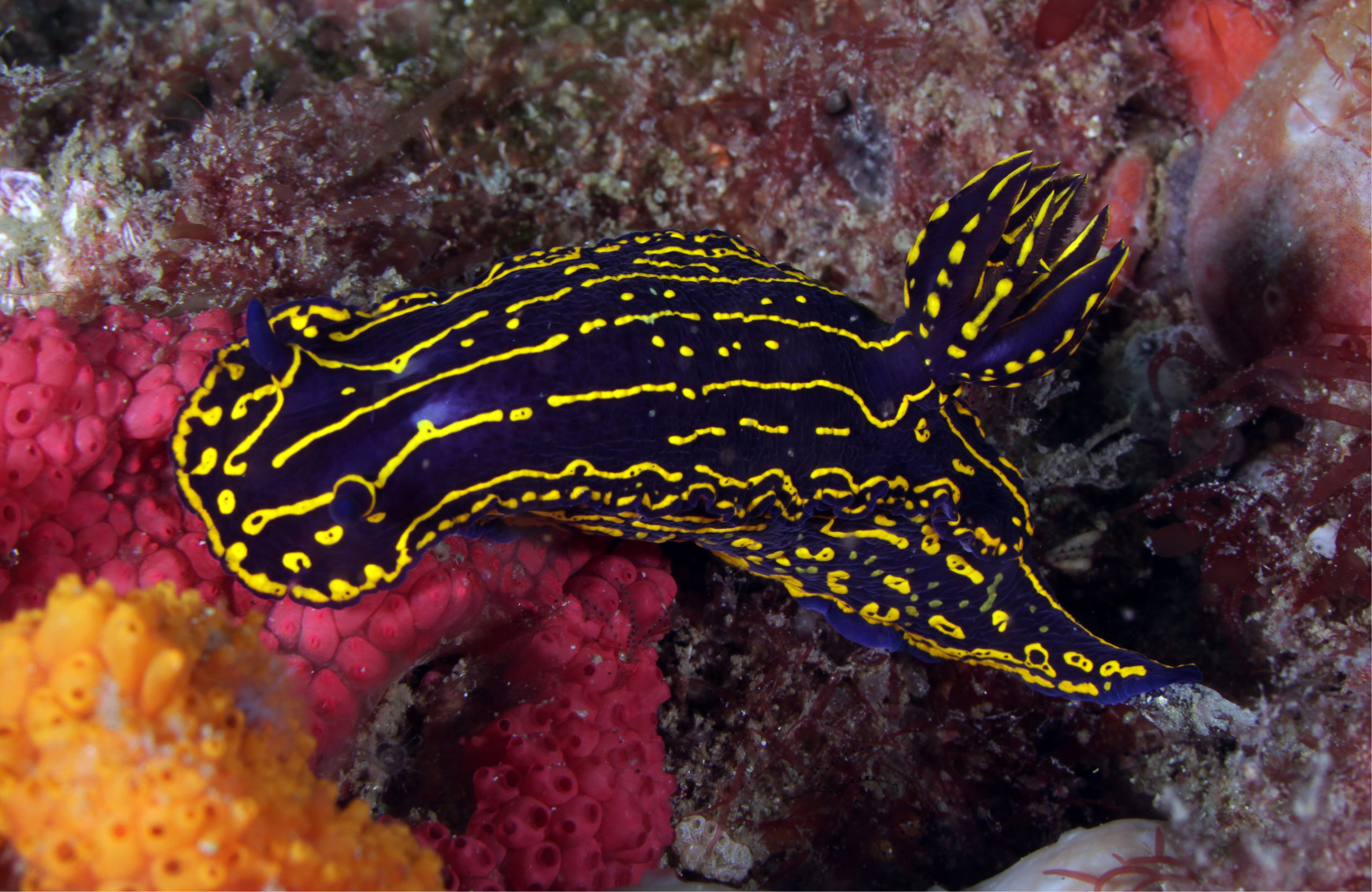
#3: As the regal sea goddess age changes so does its pattern.
Regal sea goddess nudibranchs have a distinct coloration of yellow patterns across their blue base. As they grow in size, these patterns change, with the yellow dorsal lines becoming far more fragmented. The older the nudibranch gets, the more yellow spots it has.
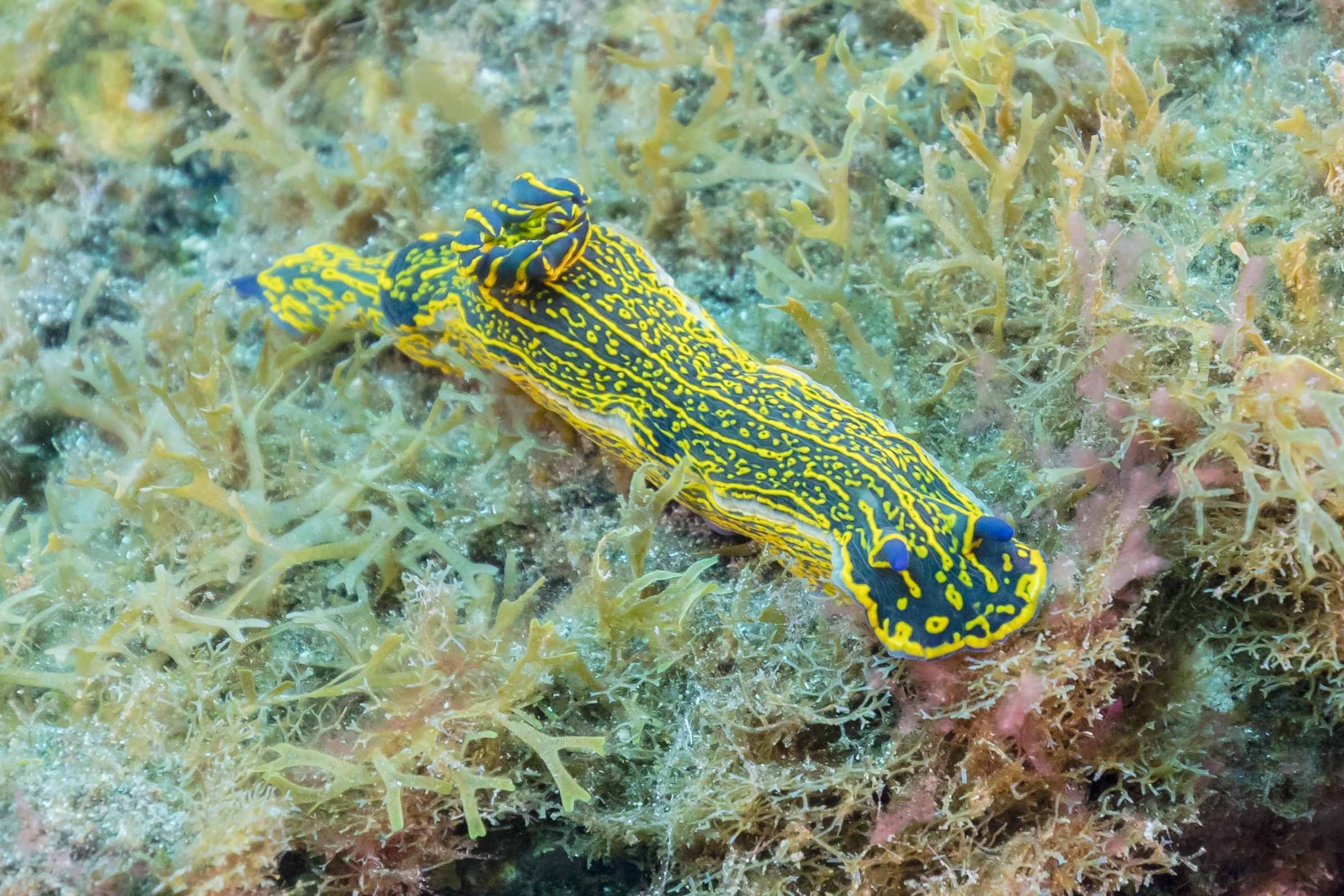
#4: What’s on the menu for a regal sea goddess nudibranch?
A regal sea goddess nudibranch’s diet consists mainly of marine sponges. Most of the marine sponges they eat are from the Dysideidae Family.
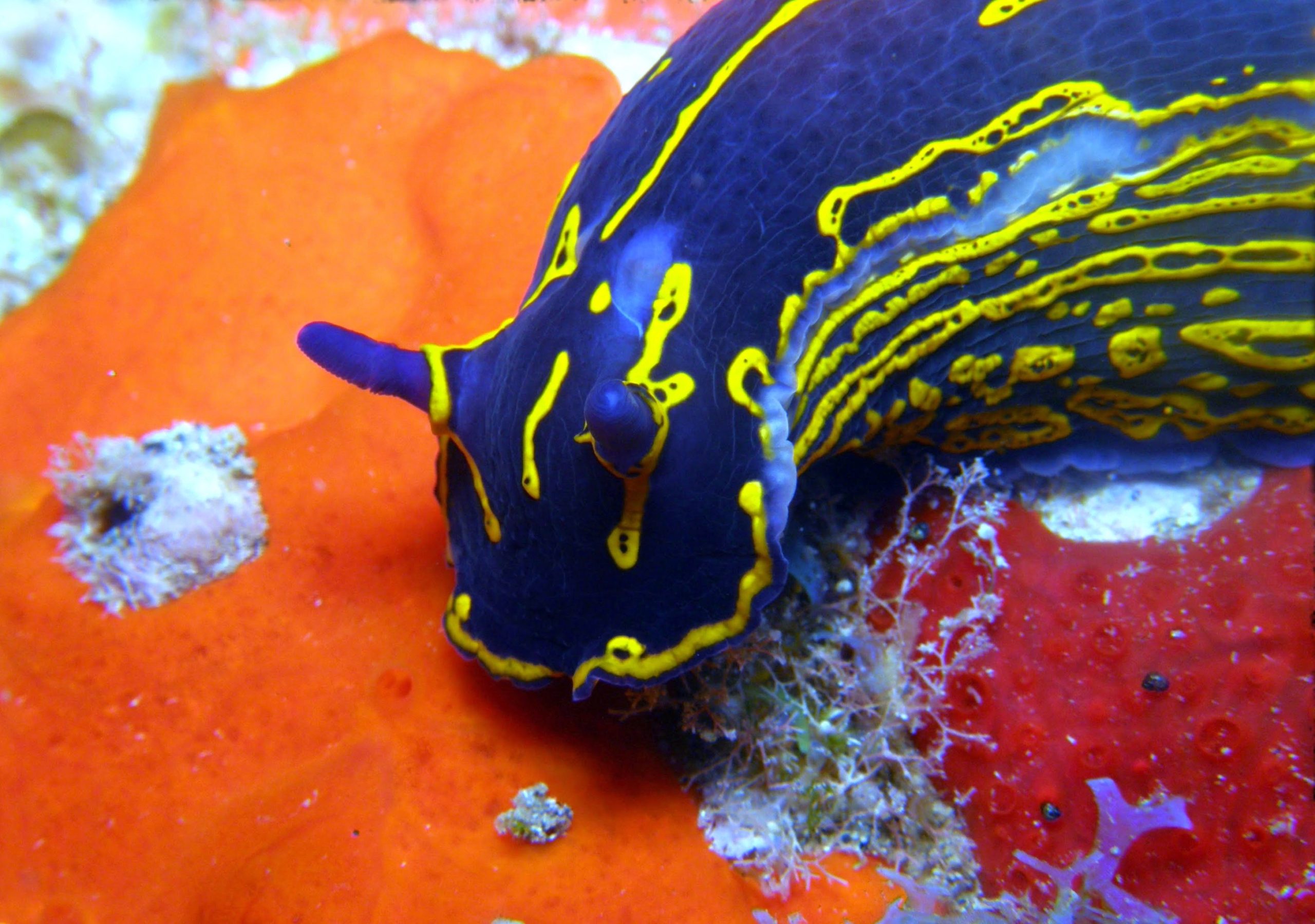
#5: Regal sea goddesses recycle toxins!
The sponges the regal sea goddess eats produce toxins as a form of defense against predation. However, these nudibranch are not affected by these toxins, and instead have the ability to absorb them and use them as their own form of defense!

#6: Regal sea goddess nudibranchs have special antennae.
Regal sea goddesses nudibranchs have two rhinophores, or scent and taste receptors, located on the top of their head. These are highly sensitive and used to help them detect food, mating partners and predators.

#7: Regal sea goddess gills look like feathers!
Regal sea goddess nudibranchs need gills to breathe, just like many other marine species. The feather-like appendage on the posterior of a regal sea goddess is its gills.
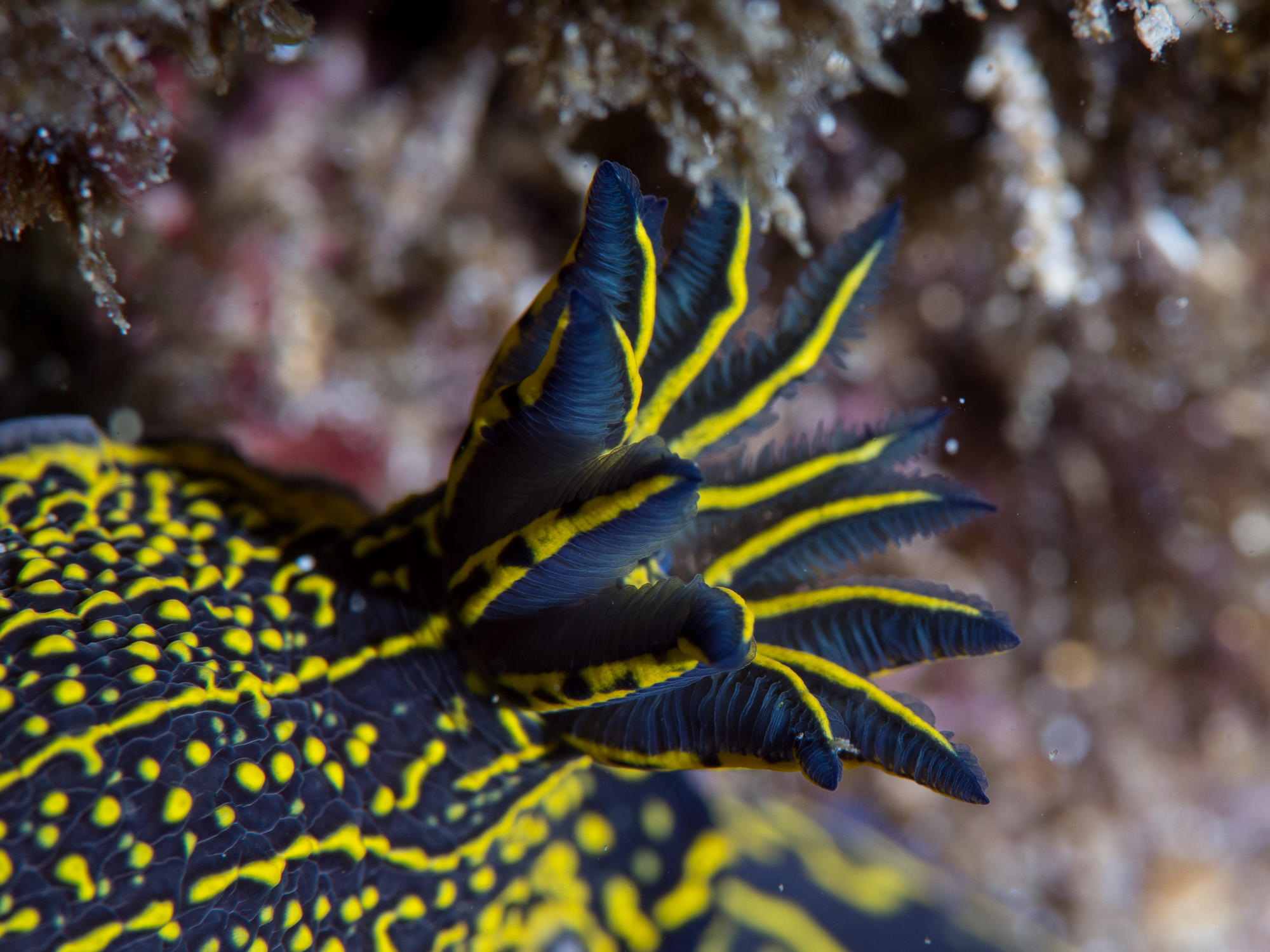
#8: Regal sea goddess nudibranchs don’t need to find the perfect partner.
Regal sea goddess nudibranchs are hermaphrodites, which means they can play both male and female roles during mating. This adaptation allows them to mate with any mature nudibranch within their species.
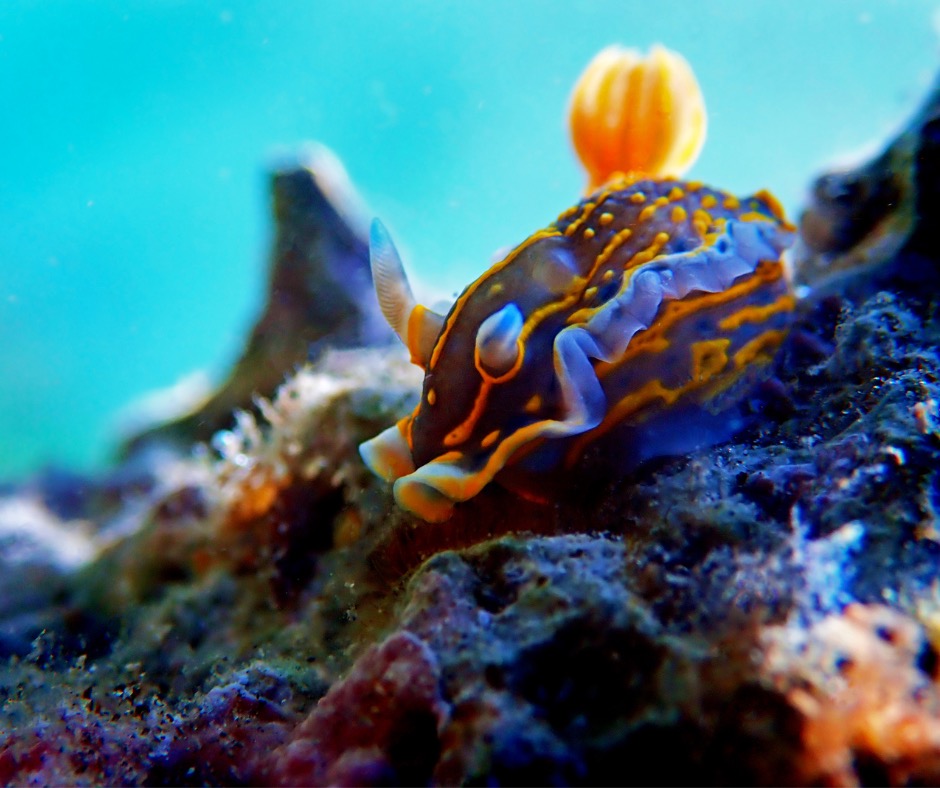
#9: Regal sea goddesses lay eggs.
The eggs of regal sea goddess nudibranchs are laid on rocks within the reef. They are orange and ribbon-like, totaling an average length of 1 inch.

Regal sea goddess nudibranchs are a beautiful sight to see, but in recent years they have become harder to find. This could be due to numerous reasons, such as water pollution and loss of habitat and food. Let’s keep doing what we can to protect our ocean and their home.
Additional Regal Sea Goddess Nudibranch Resources:
1. Regal Sea Goddess (Felimare picta) – Bailey-Matthews National Shell Museum
2. Not so sluggish: the success of the Felimare picta complex (Gastropoda, Nudibranchia) crossing Atlantic biogeographic barriers
3. Regal Sea Goddess – i.Naturalist


